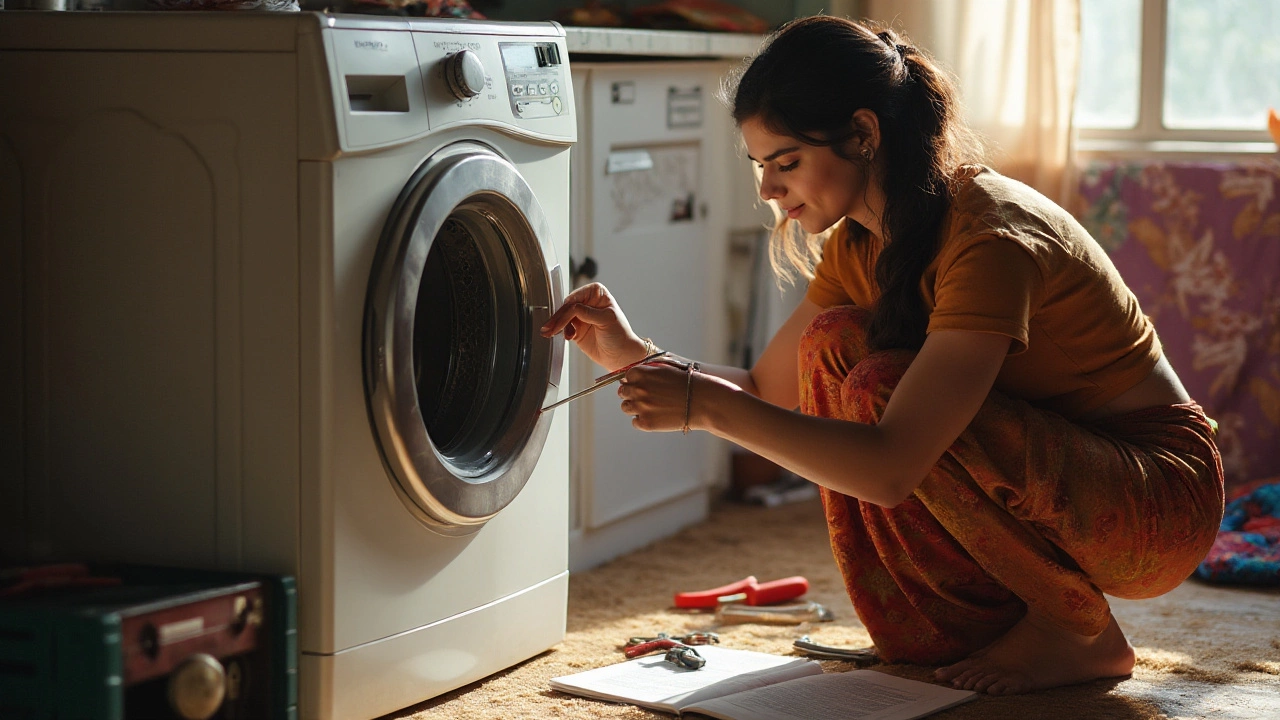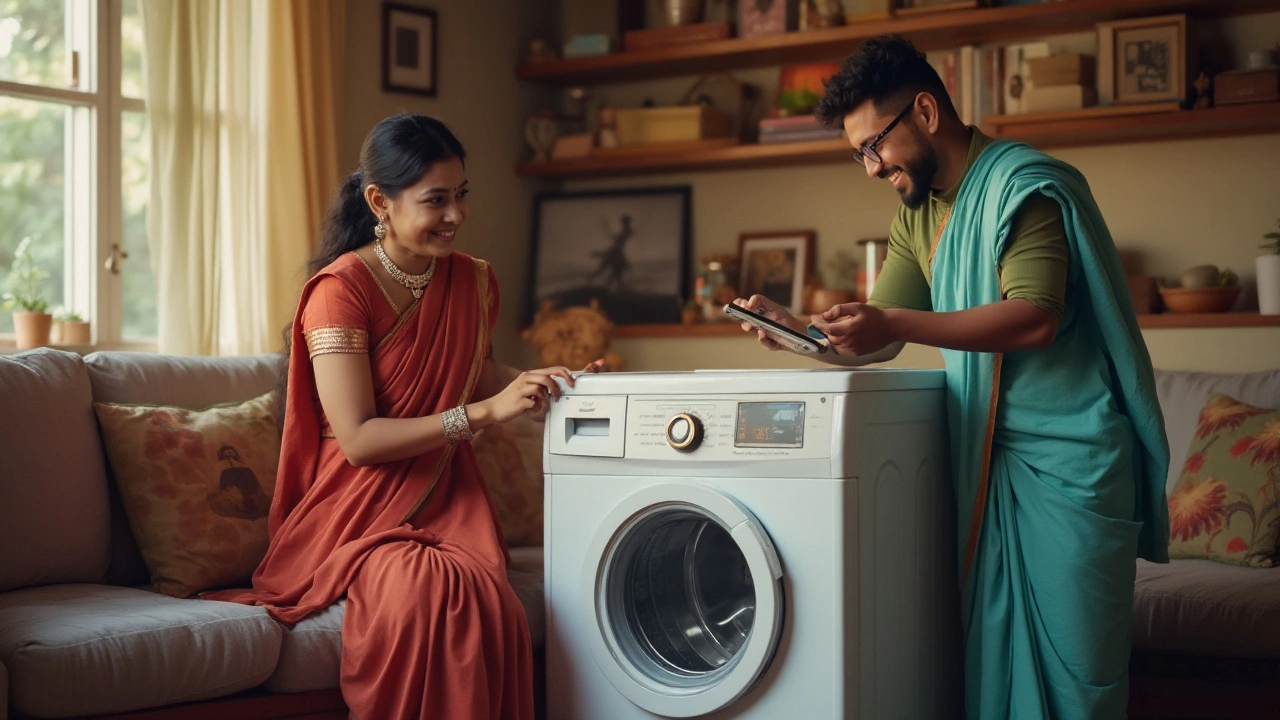Wondering how long your washing machine will actually last? This article digs deep into what really affects a washer's lifespan, busts some common myths, and gives you clear advice on when to repair or replace. Get practical hacks to extend your machine’s life and spot early warning signs of trouble. If you’re trying to squeeze more years out of your appliance or just avoid headaches, you’ll find useful answers here.
Washing Machine Repair: Quick Fixes & When to Call a Pro
If your washer has stopped spinning, shows weird error codes, or simply won’t start, you’re probably wondering whether you can sort it out yourself. The good news is that many everyday issues have simple fixes you can do in under an hour. Below we’ll cover the most common problems, a step‑by‑step reset guide, and the signs that it’s time to bring in a professional.
Common Washer Problems and Easy DIY Fixes
First, let’s list the top three complaints we hear from homeowners:
- Washer won’t spin or drain. Usually this means a blocked pump filter, a loose lid switch, or a worn‑out drive belt.
- Leaking water. Check the hoses for cracks, tighten the inlet connectors, and make sure the door gasket isn’t damaged.
- Strange noises or shaking. An unbalanced load can cause wobble, but rattling can also come from loose shock absorbers or a faulty motor mount.
Here’s how you can tackle each one without a toolbox full of fancy parts:
- Clear the pump filter. Most front‑load models have a small hatch at the bottom front. Open it, pull out the filter, and rinse away any lint, coins, or hair.
- Inspect the lid switch. This tiny switch tells the machine it’s safe to spin. If the lid doesn’t click shut, the washer may think it’s open and stop the spin cycle. Press the switch with a screwdriver – you should hear a click. If it’s broken, replace it; it’s cheap and easy.
- Check the drive belt. Pull the back panel, locate the rubber belt around the motor and drum pulley. If it looks frayed or loose, snap on a new belt. Most belts are under ₹500 and fit a wide range of models.
- Seal the door gasket. Run your finger around the rubber seal. If you feel rough spots or see mold, wipe it with a mix of water and vinegar. A clean seal prevents leaks and keeps the drum dry.
- Balance the load. Overloading or mixing heavy towels with lightweight shirts creates uneven weight distribution. Load similar items together and avoid stuffing the drum too full.
These quick checks solve about 70 % of everyday washer hiccups. If the problem persists after trying them, it’s time for a deeper look – or a call to a local repair shop.
How to Reset Your Washing Machine (Step‑by‑Step)
Many modern washers have a built‑in reset that clears error codes and restores normal operation. The process varies by brand, but the basics are the same:
- Unplug the machine or flip the circuit breaker off for at least 30 seconds. This drains any residual power.
- Plug it back in and press the “Power” button to turn it on.
- Hold the “Start/Pause” button for 5‑10 seconds. On most Samsung, LG, or Whirlpool models this forces a factory reset.
- If your washer shows a specific error code (like “E24” for drainage), look up the code in the user manual. Often the reset will also clear it.
For brands that use a “Reset” button, simply press and hold it until the display flashes or goes blank, then release. After the reset, run a short empty cycle to make sure the machine runs smoothly.
When you see error codes you can’t decode, our post “How to Reset a Washing Machine: Fast, Safe Methods + Brand Cheat Sheet” walks you through the most common codes for top brands. It’s a handy reference if you’re dealing with a stubborn glitch.
Remember, a reset won’t fix mechanical wear, but it can clear software hiccups that often make a perfectly good washer act up.
In short, start with the simple checks, try a reset, and only then call a technician if the drum still won’t spin or you hear grinding noises. A quick DIY fix can save you time and money, and most homeowners feel more confident once they’ve tackled the basics.
Need a professional touch? Our team at Mumbai Laptop Repair Service Hub also handles washing machine repair, offering fast service at competitive rates. Give us a call, and we’ll get your washer back in action without the guesswork.
Repairing a washing machine on your own might seem daunting, but with some guidance, the task becomes manageable. Learn how to diagnose and fix common issues without calling a professional. This article offers practical advice, insider tips, and essential tools to keep your washing machine running smoothly. Understand the components and familiarize yourself with troubleshooting methods to solve washing machine problems efficiently.
Washing machines are essential household appliances, yet they can sometimes break down unexpectedly. This article explores the common parts that are prone to failure in washing machines, such as belts and water pumps, and offers practical tips for troubleshooting and repairs. Understanding these problems can save both time and money. With a bit of knowledge, many minor issues can be resolved without professional help.
Deciding whether to repair a seven-year-old washing machine can be tricky. Older models may still have life left in them, but knowing when to repair or replace them can save you money and frustration. Understanding the common issues with older machines, cost considerations, and the environmental impact of buying new can help in making an informed decision. This article guides you through what factors to consider when facing this household dilemma.



